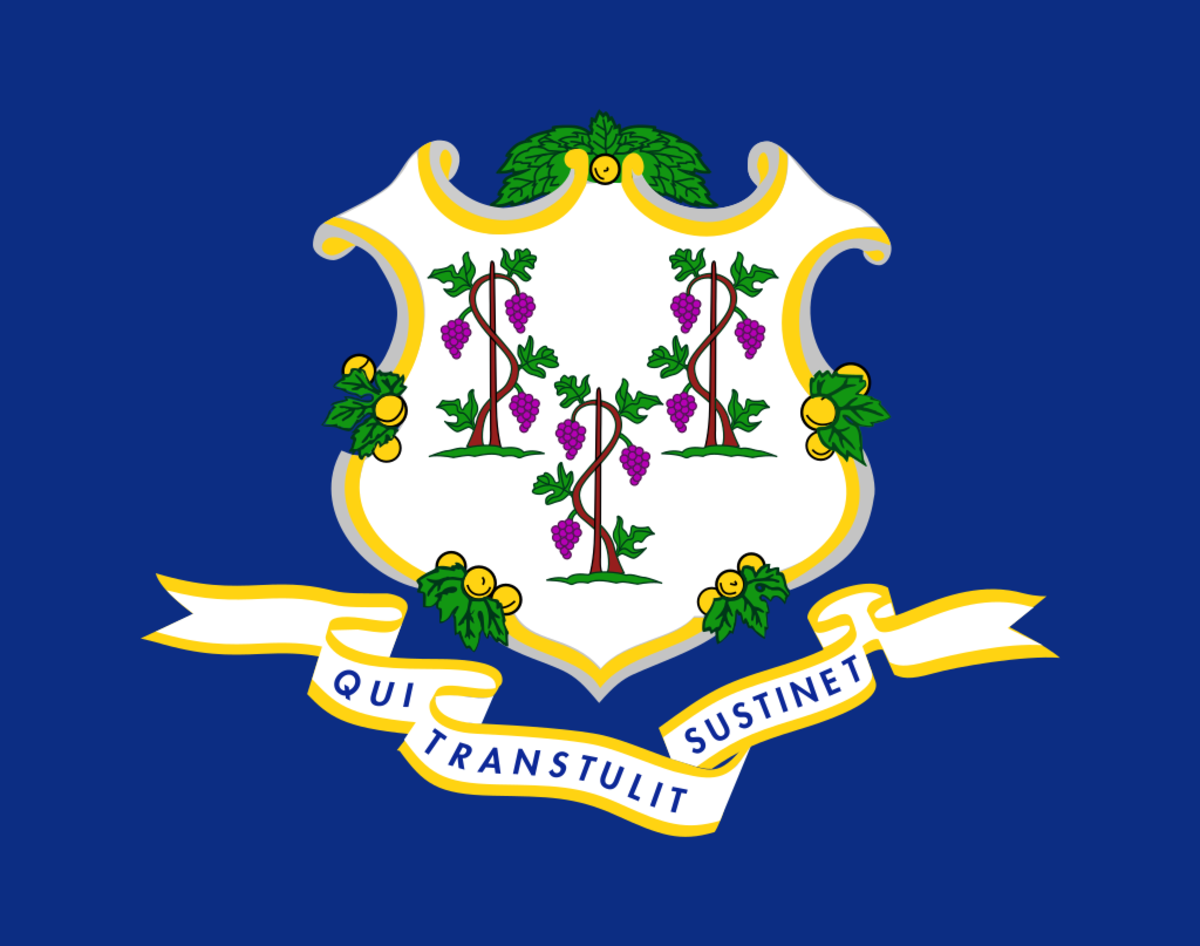Connecticut Divorce Laws

Connecticut is ranked third in the country with the lowest marriage rate, at 11.9 per 1,000 women. It is also one of the states where people tend to marry later in life. According to federal data, the median age of someone in the state marrying for the first time is 30.55.
The divorce rate in Connecticut, on the other hand, is 4.9 per 1,000 women. These figures put the Constitution State slightly higher than its neighbor Massachusetts, which has a 4.6 rate. Given these statistics, one must take note that a marriage ending in divorce is a possibility.
Reasons for marriage dissolution in the state vary. One accepted reason for divorce, intolerable cruelty, is an unfortunate reality for many residents in Connecticut. Indeed, according to the Connecticut Coalition Against Domestic Violence, refuge centers for abuse victims operated at 156% capacity from July 2020 to June 2021.
When divorce is inevitable, one must learn how it is finalized. This article explains Connecticut’s no-fault and at-fault system. It also provides an overview of the steps necessary for marriage dissolution. In addition, this article has a list of resources one can use to obtain the support they need, especially in cases involving domestic abuse.
Is Connecticut a No-Fault State When It Comes to Divorce?
Yes, Connecticut is a no-fault state. To put it differently, a person may claim that their marriage has irretrievably broken down to obtain a divorce decree from a court. However, the Constitution State also allows individuals to cite other at-fault grounds for marriage dissolution. Under state law, the other reasons why someone would end their marriage include:
Adultery;
Both parties living apart for a minimum consecutive period of 18 months before filing divorce papers, with the impossibility of reconciliation;
Intolerable cruelty.
How to File for Divorce in Connecticut
The divorce process can be difficult, depending on whether both parties agree on marital issues. If they see eye to eye on all concerns, like child custody and alimony, the divorce proceeds with fewer requirements. However, if the couple disputes multiple issues, the paperwork necessary to complete their divorce becomes more extensive.
Individuals can reduce the stress associated with the filing process through knowledge of the requirements. They may also obtain the services of a skilled lawyer to navigate a range of complex issues, from property division to child support.
State law specifies that those who initiate and file the divorce papers are called plaintiffs. The paperwork must be served to their ex-spouse or the defendant. Connecticut statutes also mention that either of the parties needs to have resided for at least 12 months in the state prior to the filing of divorce papers.
1. Complete and submit required forms
Individuals seeking to initiate the divorce process must file the required forms. These consist of:
Form JD-FM-159. This document is the Divorce Complaint that allows the plaintiff to start the marriage dissolution process. The legal paper asks the court and the defendant what the plaintiff wants to happen. These may include requests for child custody and property division. The document also requires the plaintiff to pick out a Return Date. The date is around four weeks after the divorce papers have been filed and is always a Tuesday.
Form JD-FM-3. This document refers to the Summons Family Actions. It is used to notify the defendant that the plaintiff is starting a divorce.
Form JD-FM-158. This document is the Notice of Automatic Court Orders. Through this, either party is disallowed to perform actions that change the marital situation, like taking the children out of Connecticut or selling properties. The plaintiff must fill out the Case Management Date on the form. They can ask the court clerk for the appropriate date. It should be at least 90 days from the Return Date. The Case Management Date depends on the county where the Divorce Complaint is filed. For instance, courts in Bridgeport and New Haven follow a Tuesday schedule. Hartford and New Britain courts, on the other hand, adhere to a Monday schedule.
Another document that may be needed is Form JD-FM-175. This refers to the Certification of Notice in Family Cases and shows whether either or both parties received benefits from a state or city welfare program.
The fee to file for divorce in Connecticut is $360. One may submit Form JD-FM-75 to apply for a waiver of filing fees.
2. Serve paperwork to the other party
The next step for the plaintiff is to serve a copy of the paperwork to the defendant. These documents should be served to the other party by a state marshal. They charge $50 for an instance of service and an additional $50 for each subsequent occurrence. This additional fee decreases to $20 in cases where a party or their child receives assistance from the state.
The state marshal must deliver the paperwork at least 12 days before the Return Date. Once the papers have been given to the defendant, the state marshal will prepare and submit a document attesting that the defendant received the paperwork to the applicable court. This proof must be sent to the applicable court six days before the Return Date.
Defendants need to submit Form JD-CL-12 or Appearance to the applicable court. This document is filed to help the other spouse avoid divorce by default. It should be sent to the court clerk on or within two days after the Return Date. In addition, the defendant must file Form JD-FM-160. This document pertains to their Answer to the Complaint. It should be submitted within 30 days of the specified Return Date. Another document is Form JD-FM-159. Used by the plaintiff to file for divorce, the form is also utilized by defendants as a Cross Complaint, where they can request alternative orders regarding marital issues.
3. Request for temporary or emergency orders, if necessary
In some cases, plaintiffs may request courts for temporary orders concerning various issues, including child custody, alimony, and parenting time. This request is filed through Form JD-FM-176. If the plaintiff is subject to domestic abuse, they can submit Form JD-FM-137. This document allows the victim to obtain a restraining order against their spouse in addition to temporary custody. In cases where the plaintiff has children under 18, they need to file Form JD-FM-164. It shows the court where each child has lived for the last five years.
4. Attend the required classes
Within 60 days of filing the divorce papers in court, divorcing parents with children are required to attend and complete a Parenting Education Program. It helps parents understand how marriage dissolution impacts their children. The program also educates participants in various areas, including conflict management and cooperative parenting.
Under state law, parenting education programs must not go over 10 hours in length. It shall also not exceed $200 in fees. However, this figure is adjusted annually to account for inflation. If a participant is not able to pay the fee, they can obtain assistance from the court.
There are numerous providers of these programs throughout the state. Some organizations offering these services include Catholic Charities, Archdiocese of Hartford, Shoreline Wellness Center, and United Services.
5. Undergo mediations and evaluations, if necessary
Another possible step in a Connecticut divorce process is mediation. Both parties may undergo this alternative dispute resolution program for issues like child visitation. Mediation is offered free by the Court Support Services Division or the CSSD of the Connecticut Judicial Branch. It lasts up to three sessions, with each session lasting two hours.
The court may also require both parties to undergo a Comprehensive Evaluation in cases involving parenting plans. This program is conducted by a Family Relations Counselor. They will collect information from individuals like therapists and doctors involved with the family. This info is used to help parents come to a healthy parenting arrangement.
Comprehensive Evaluations are free under the CSSD. However, if an individual obtains the services of private custody evaluators, the costs can be steep. These private evaluations may be performed by forensic psychologists, and they charge anywhere between $200 and $450 hourly.
6. Go through a Case Management Conference
The Case Management Conference occurs on the Case Management Date identified by the plaintiff in the initial divorce filing. Judges preside over these conferences and receive updates on the divorce case. They may provide a Scheduling Order that establishes the dates for future court hearings. The document also shows the due dates for discovery.
Before or on the conference date, both disputing parties must file form JD-FM-6-SHORT or JD-FM-6-LONG. These forms are Financial Affidavits. The Short form is used by individuals with less than $75,000 in gross annual income. Meanwhile, the Long form is utilized by those with a gross annual income of more than $75,000. If child custody is disputed by both parties, then they need to file a parenting plan.
7. Undergo discovery proceedings, if necessary
In complex cases, financial affidavits filed by either of the parties might not be enough to shed light on their economic situation. As such, a party can request for discovery. Through this action, the plaintiffs or defendants receive a range of financial documents, including bank account statements and balance sheets. These documents are especially helpful in disputes over property division. The paperwork for these must be produced within 60 days from the date of request.
8. Attend a pretrial conference, if necessary
A pretrial conference occurs within a period between 90 and 120 days from the filing of the divorce papers. It is a final attempt for both parties to reach an agreement.
There are two types of pretrial conferences. The first is the judicial pretrial. This is a conference presided over by a judge in their chambers. The second one is a special masters pretrial, which is held in a conference room inside the courthouse. Unlike a judicial pretrial, the special masters are one or two attorneys experienced in divorce law.
A Separation Agreement is the outcome of a pretrial conference if both parties come to mutual terms on all marital issues.
9. Finalize the divorce process
The estranged couple’s divorce may finally conclude in either of these ways:
By trial. This is the very last step in a contested divorce. During a trial, both parties present their case before the judge. The divorcing couple may call on their respective witnesses, like a Guardian ad Litem, in the litigation proceedings. Trials can take anywhere from multiple hours to weeks. The judge provides a decision 120 days from the last day of the trial.
By agreement. If both parties see eye to eye on all marital issues, they can file Form JD-FM-172. This document refers to the Dissolution Agreement. It consolidates the divorcing couple’s decisions regarding areas like retirement funds and household goods.
By default. If the defendant did not file an Appearance, the plaintiff may file Form JD-FM-272. This document pertains to the Motion to Waive Statutory Time Period. It requests the court to finalize the divorce before the 90-day period ends. The plaintiff must also file Form JD-FM-178, which declares whether the defendant is a military service member.
How Property Is Divided in a Connecticut Divorce
Connecticut is an equitable distribution state. Courts in the Constitution State do not necessarily divide marital assets equally. In fact, under state law, superior courts may provide all assets to either spouse. Connecticut statutes also specify the factors that judges consider in property division:
Length of marriage
Cause of marriage dissolution
Sources of income
Age of both parties
Health of both parties
Contribution of both parties in the appreciation, preservation, or acquisition of marital assets.
Some assets are not considered subject to property division. These are separate properties, which are assets owned by a party prior to their marriage. However, unlike other states, Connecticut courts tend to blur the distinction between marital and separate properties. To put it differently, all assets of a party can be considered marital property.
Given these facts, it is crucial for plaintiffs to hire a lawyer knowledgeable of the state’s property division laws. Legal advice from an attorney is especially vital in Connecticut, which ranks second among states with the highest state-local tax burdens in 2022.
A concern that parents who have children aged 18 to 23 must be aware of is the Educational Support Order. This act allows courts to require one or both parties to pay for post-secondary education costs. These expenses must not exceed the amount of full-time in-state tuition charged by the University of Connecticut. Hence, this limitation became known as the “UConn cap.”
Connecticut Divorce FAQs
This section answers the questions Connecticuters frequently ask regarding divorce.
Legal Resources for Getting a Divorce in Connecticut
Initiating the marriage dissolution process in Connecticut can be challenging. Multiple guidelines and deadlines await both parties seeking to end their marriage. To support their journey before, within, and after divorce, various organizations in Connecticut provide a range of services that help Connecticuters reach their personal goals.
Connecticut Judicial Branch
The branch aims to serve the interests of residents throughout Connecticut through the efficient, open, fair, and timely resolution of various matters. It provides electronic filing services to help law firms or attorneys manage their cases better. The branch also oversees the Victim Compensation Program. Through this program, victims of domestic violence, stalking, and sexual abuse may receive financial reimbursement for medical expenses and lost wages. In cases involving the victim's death, their relatives can apply and obtain survivor benefits up to $25,000 from the state. Note that the program does not cover property loss or household living expenses. Those seeking to apply may email OVSCompensation@jud.ct.gov or call the organization at 1-888-286-7347.
Connecticut Department of Social Services - Office of Child Support Services
The mission of the office is to promote the self-sufficiency and well-being of families and children throughout Connecticut. It helps establish the legal parentage of kids, enforces child support agreements, and modifies these if necessary. It also collects child support payments, locates non-custodial parents, and assists parents with related concerns through coordination with other relevant agencies. One can contact their local child support office through an online directory. Additionally, an individual seeking to acknowledge their parentage may walk into facilities located in areas like Bridgeport, Manchester, New Haven, and Stamford. In cases involving payment processing, call 1-888-233-7223.
Safe Connect
A project managed by the Connecticut Coalition Against Domestic Violence, Safe Connect helps domestic abuse survivors throughout the state obtain assistance. Its team includes bilingual Advocacy Coordinators who are accessible 24/7. Safe Connect educates family members about the symptoms of domestic abuse through its website. It also provides a way for parents to learn how abuse impacts their children’s well-being, as seen in their changes in behavior or developmental delays. One can contact advocacy coordinators through chat on the Safe Connect website. You may also email safeconnect@ctcadv.org or call 1-888-774-2900 to contact Safe Connect staff.
Connecticut Legal Services
Since 1977, Connecticut Legal Services, or CLS, has been working with residents who lack affordable housing, education for their children, or medical care. Formed through the incorporation of multiple organizations, including Fairfield County Legal Services and the Middlesex County Legal Assistance Association, CLS helps people in crisis, particularly women, people of color, and seniors. It has experience working with domestic violence victims. An individual can contact CTS by texting APPLY to 860-300-3845. You may also call 1-800-453-3320 or submit an application online for legal assistance.
Connecticut Association for Human Services
The Connecticut Association for Human Services, or CAHS, provides multiple services to assist members of the community, including those who have gone through significant life changes like divorce, and helps them avoid poverty. One of the services the association oversees is one-on-one financial coaching. This program allows participants to reach solutions regarding a range of problems, from poor credit history to overwhelming debt. CAHS also handles Volunteer Income Tax Assistance, or VITA, a solution that helps residents in Connecticut complete their tax returns. One may contact the VITA Program Coordinator, Nick Brundage, through email at nbrundage@cahs.org or a call at 860-951-2212 to obtain more information about the tax assistance program. Inquiries directed at CAHS, meanwhile, can be sent through their email address (info@cahs.org) or phone number (860-951-2212).
Expertise.com StaffAuthor
Step into the world of Expertise.com, your go-to hub for credible insights. We don't take accuracy lightly around here. Our squad of expert reviewers, each a maestro in their field, has given the green light to every single article you'll find. From rigorous fact-checking to meticulous evaluations of service providers, we've got it all covered. So feel free to dive in and explore. The information you'll uncover has been stamped with the seal of approval by our top-notch experts.




